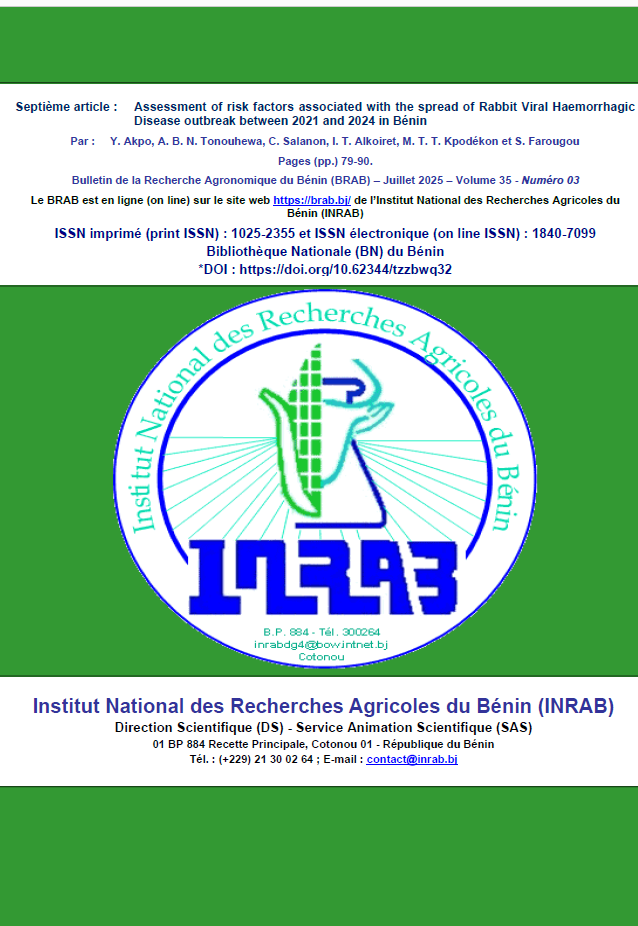Assessment of risk factors associated with the spread of the Rabbit Viral Haemorrhagic Disease outbreak between 2021 and 2024 in Bénin
DOI:
https://doi.org/10.62344/tzzbwq32Keywords:
Epidemic, rabbit farming, virus, Atlantic, OuemeAbstract
The rabbit viral haemorrhagic disease (VHD) is a major viral infection that has negatively impacted rabbit farm productivity in Benin for several years. To assess the factors associated with the occurrence of cases in rabbit farms during the recent epidemics of 2021 to 2024 in southern Benin, a case-control study was conducted in six municipalities in the affected area. A total of 100 rabbit farmers aged over 18 years and residing in the targeted municipalities were interviewed using a digital questionnaire on Kobotoolbox. Rabbit farming was the main activity of 53% of the farmers interviewed, with an average herd size of 57 rabbits. A significant proportion of the study participants (68%) had more than 5 years of experience in rabbit farming, while coccidiosis and scabies were the most common health problems in 53% and 45% of farms, respectively. The rabbits were mainly raised in semi-modern buildings (69%) and were fed commercial feed plus fodder in 64% of the farms. More than half of the respondents did not have footbaths at the entrance to the farm buildings (57%), and 74% of farms had outsiders accessing the farm buildings. Once VHD cases were reported, most farmers did not adopt any strategy to stop the spread of infection to other animals on the farm. In terms of risk factors, the incidence of VHD was 2.6 times higher on farms where systematic hand washing before handling rabbits was not practised (OR=2.67; P=0.04). In addition, VHD was 3.27 times more frequent in farms where other animal species had access to the farm buildings (OR=3.27; P=0.013). To mitigate these risks and protect rabbit herds, it is necessary to promote good hygiene, biosecurity, and vaccination practices.

Published
Issue
Section
License
Copyright (c) 2025 Bulletin de la Recherche Agronomique du Bénin

This work is licensed under a Creative Commons Attribution-NoDerivatives 4.0 International License.
Les articles publiés par le Bulletin de la Recherche Agronomique du Bénin sont en libre accès. Ils sont gratuits pour tout le monde, immédiatement téléchargeables dès la publication et distribués sous la licence CC BY-NC-ND (https://creativecommons.org/licenses/by-nc-nd/4.0/).







